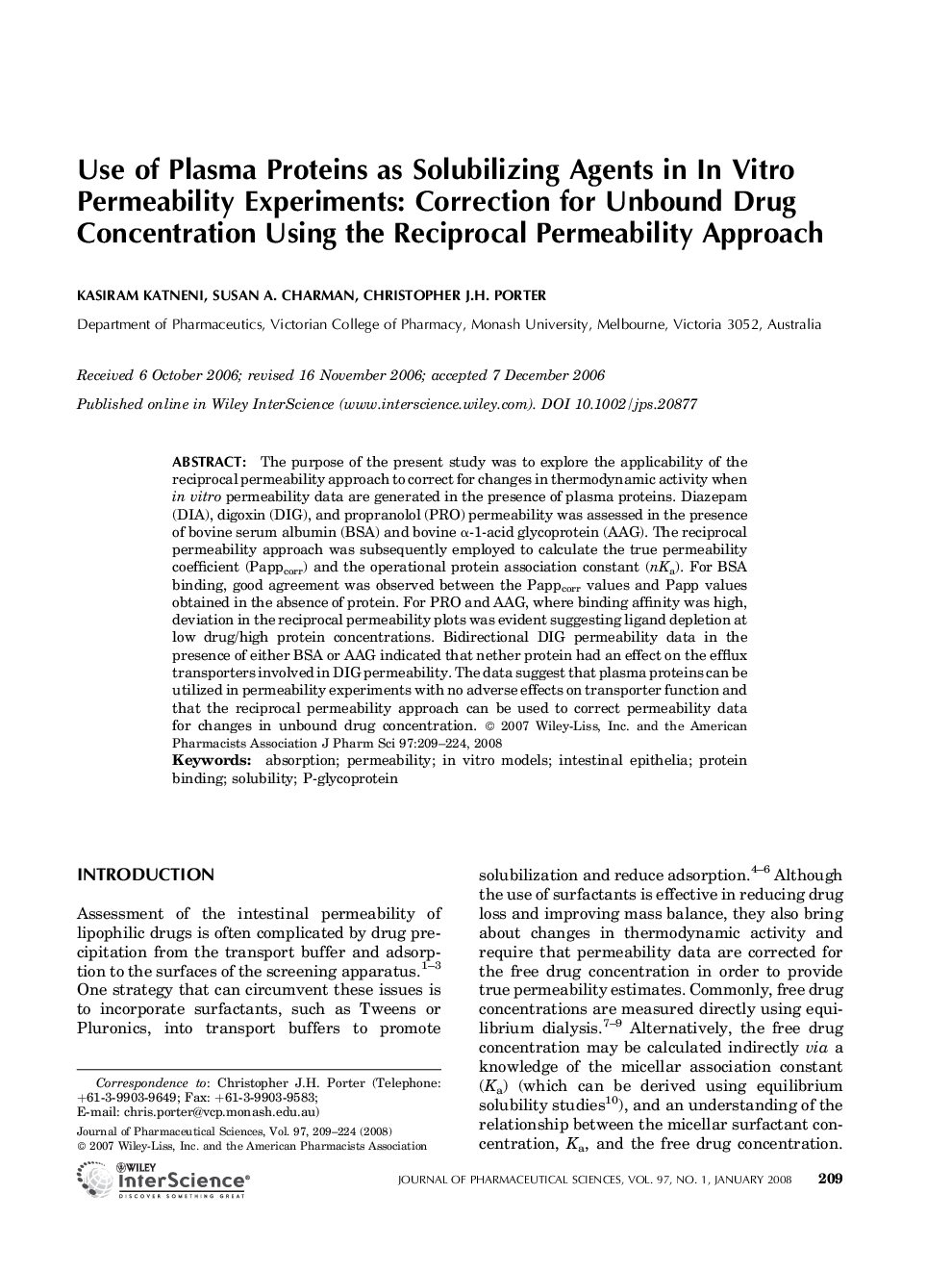| Article ID | Journal | Published Year | Pages | File Type |
|---|---|---|---|---|
| 2487590 | Journal of Pharmaceutical Sciences | 2008 | 16 Pages |
ABSTRACTThe purpose of the present study was to explore the applicability of the reciprocal permeability approach to correct for changes in thermodynamic activity when in vitro permeability data are generated in the presence of plasma proteins. Diazepam (DIA), digoxin (DIG), and propranolol (PRO) permeability was assessed in the presence of bovine serum albumin (BSA) and bovine α‐1‐acid glycoprotein (AAG). The reciprocal permeability approach was subsequently employed to calculate the true permeability coefficient (Pappcorr) and the operational protein association constant (nKa). For BSA binding, good agreement was observed between the Pappcorr values and Papp values obtained in the absence of protein. For PRO and AAG, where binding affinity was high, deviation in the reciprocal permeability plots was evident suggesting ligand depletion at low drug/high protein concentrations. Bidirectional DIG permeability data in the presence of either BSA or AAG indicated that nether protein had an effect on the efflux transporters involved in DIG permeability. The data suggest that plasma proteins can be utilized in permeability experiments with no adverse effects on transporter function and that the reciprocal permeability approach can be used to correct permeability data for changes in unbound drug concentration. © 2007 Wiley‐Liss, Inc. and the American Pharmacists Association J Pharm Sci 97:209–224, 2008
